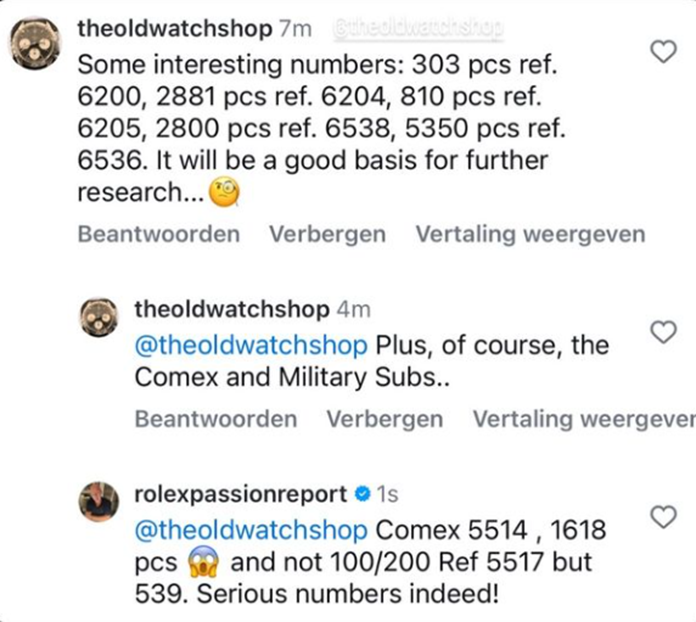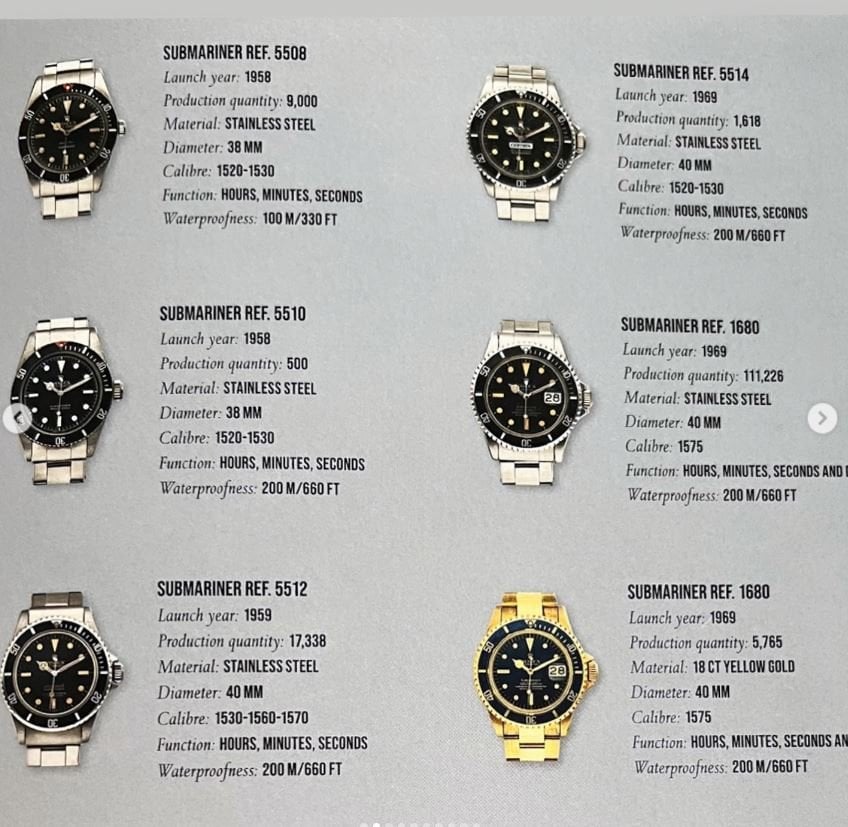Mark020
··not the sharpest pencil in the ΩF drawerOne of my hobbies is researching watches. I have datebases with a.o. Universal Geneve, Movado polyplan & chronographs, Longines 5699 & 5347 imperiables. A very interesting question (IMHO) is always how many watches of a certain reference were made. Sometimes this number is relatively ease to obtain – at least a first glance – because for instance Longines numbered the individual watches in a certain batch.
Other brands are more challenging but there are ways to make an educated guess. Universal Geneve also watches in batches and used – very likely – consecutive numbers within this batch. Using the https://en.wikipedia.org/wiki/German_tank_problem one can then calculate an estimate of the batch size. Combining the number of known survivors and the batch number leads the Known Survival Rate© (KSR) of a certain reference. Known in this respect means ‘to be found somewhere in the public domain’. This can be the internet but also books.
My – general - theory is that the survivor rate is influenced by a couple of factors:
Perhaps this can be summarised as: ‘the higher the value, the higher the number of (known) survivors’.
My research show me that for most UG’s the KSR is between 1 and 10%. Of course there is always the unknown unknown: references which were produced but of which no survivors are known.
Most brand never published the number of watches made of a certain reference but a new book published in collaboration with Rolex includes these numbers. Mike Wood already posted some of them on insta.
I spent some time looking for the examples of the smaller batches so ref. 6200, 6204 & 6205. There will absolutely be more examples known than the number I found but on the other end these (very) high watches have a tendency to be traded in very public places (but not always serials numbers are published). The aforementioned references were unfortunately not produced with consequetive serial numbers so the tank formula would have been of little help.
Ref 6200: production 303. Examples found: 22. KSR: 7.3%
Ref 6204: production 2,881. Examples found: 26. KSR: 0.9%
Ref 6205: production 810. Examples found: 43. KSR: 5.2%
Very interesting to see that even for the very top end of the market the % is still in line with what I found earlier!
Other brands are more challenging but there are ways to make an educated guess. Universal Geneve also watches in batches and used – very likely – consecutive numbers within this batch. Using the https://en.wikipedia.org/wiki/German_tank_problem one can then calculate an estimate of the batch size. Combining the number of known survivors and the batch number leads the Known Survival Rate© (KSR) of a certain reference. Known in this respect means ‘to be found somewhere in the public domain’. This can be the internet but also books.
My – general - theory is that the survivor rate is influenced by a couple of factors:
- Age: older is lower
- Brand: well known is higher
- Complications (including chrono): more is higher
- Intrinsic value of the case:
- Chrono’s: gold is higher
- Non-chrono’s: gold is lower
- Size: bigger is higher
Perhaps this can be summarised as: ‘the higher the value, the higher the number of (known) survivors’.
My research show me that for most UG’s the KSR is between 1 and 10%. Of course there is always the unknown unknown: references which were produced but of which no survivors are known.
Most brand never published the number of watches made of a certain reference but a new book published in collaboration with Rolex includes these numbers. Mike Wood already posted some of them on insta.
I spent some time looking for the examples of the smaller batches so ref. 6200, 6204 & 6205. There will absolutely be more examples known than the number I found but on the other end these (very) high watches have a tendency to be traded in very public places (but not always serials numbers are published). The aforementioned references were unfortunately not produced with consequetive serial numbers so the tank formula would have been of little help.
Ref 6200: production 303. Examples found: 22. KSR: 7.3%
Ref 6204: production 2,881. Examples found: 26. KSR: 0.9%
Ref 6205: production 810. Examples found: 43. KSR: 5.2%
Very interesting to see that even for the very top end of the market the % is still in line with what I found earlier!
Edited:

